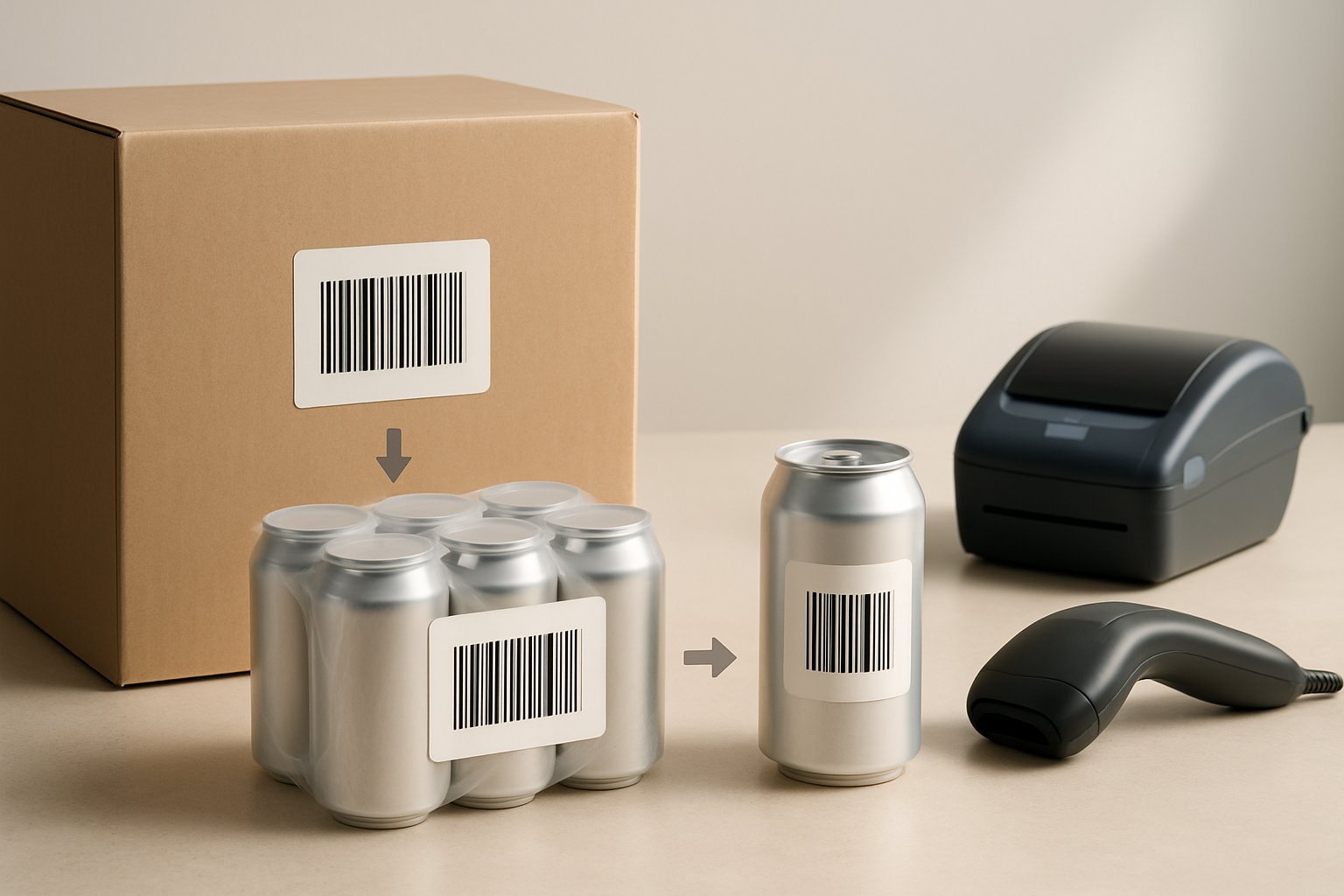Barcode Best Practices for Small Brands

As your brand grows, barcodes become more than just a requirement for retailers. They’re a core part of how products move through the supply chain—from factory floors to warehouses, retail shelves, and even online marketplaces. A well-thought-out barcode strategy ensures your products are always tracked correctly, no matter how they’re packaged or sold.
Do All Products Need a UPC?
Not every product technically needs a UPC—it depends on how and where you’re selling.
- Self-fulfillment only (your own website, shipping from your garage or office): You may not need UPCs at all. Your own SKU system can be enough to manage orders.
- Working with a 3PL or warehouse: Even if you’re only selling through your own site, barcodes are essential. Warehouses rely on scanning to receive, store, pick, and ship products accurately.
- Retailers and marketplaces: Major retailers (Target, Walmart, etc.) and online platforms like Amazon almost always require UPCs.
- Custom or one-off products: Handmade or limited-run items may not require UPCs—unless sold through a channel that mandates them.
In short: if you’re handling all fulfillment yourself, you might get by without UPCs. But if you’re working with a 3PL, retailer, or marketplace, having UPCs isn’t optional—it’s a requirement for accurate tracking and scaling.
Barcode Best Practices for Multi-Pack and Case Configurations
One of the most common areas of confusion for small brands is how to barcode products when they’re sold in multiple packaging formats. The general rule: each unique selling unit should have its own barcode.
Example: Beverage Brand
Let’s say you sell sparkling water. Here’s how the barcoding would work:
- Individual Can → Each can has its own UPC. This allows retailers to sell single cans if they choose.
- 6-Pack → The shrink-wrapped or boxed 6-pack gets its own UPC, different from the individual can.
- Master Case (4 x 6-packs) → The outer case gets its own UPC, again different from the single can and the 6-pack.
Visual Structure: How Barcodes Cascade by Pack Level
Master Case (contains 4 x 6-packs)
UPC: 098765432109
↓
6-Pack (contains 6 individual cans)
UPC: 123456789012
↓
Individual Can
UPC: 234567890123
THE ABOVE SHOULD BE LAID OUT with visuals depicting the multi pack multi barcode set up
This structure ensures:
- Retailers and warehouses know exactly which unit they’re scanning.
- Sales data is tracked at the right level.
- Products can be sold individually, in packs, or by case without confusion.
Why Each Pack Level Needs Its Own Barcode
- Flexibility in Sales Channels – Some stores may only sell single units, while others prefer multipacks or full cases. Barcodes allow for this flexibility.
- Accurate Reporting – Sales data stays clean when each configuration is tracked separately.
- Warehouse Efficiency – Scannable barcodes at every level (unit, pack, case) make picking, packing, and shipping faster.
- Error Reduction – Fewer mis-scans or mis-shipments when barcodes clearly distinguish each package type.
Best Practices Checklist
- ✅ Every unique product gets its own UPC (different color, size, or flavor = new code).
- ✅ Each packaging configuration gets its own UPC (individual, multi-pack, master case).
- ✅ Work with GS1 to ensure codes are legitimate and tied to your brand.
- ✅ Plan ahead—if you know you’ll expand into multi-packs or wholesale, secure enough UPCs early.
- ✅ Coordinate with your warehouse/3PL—ask how they expect products to be barcoded for smooth receiving and fulfillment.
Future-Proofing With the Right Barcode Strategy
Barcodes aren’t just compliance—they’re infrastructure for growth. By assigning unique UPCs at every level, your brand avoids costly headaches with retailers, ensures cleaner sales reporting, and builds a foundation that supports expansion into new channels.
Whether you’re selling candles, apparel, beverages, or any other consumer product, thinking through barcode strategy today will save time, money, and frustration tomorrow.
👉 Related Articles:








































